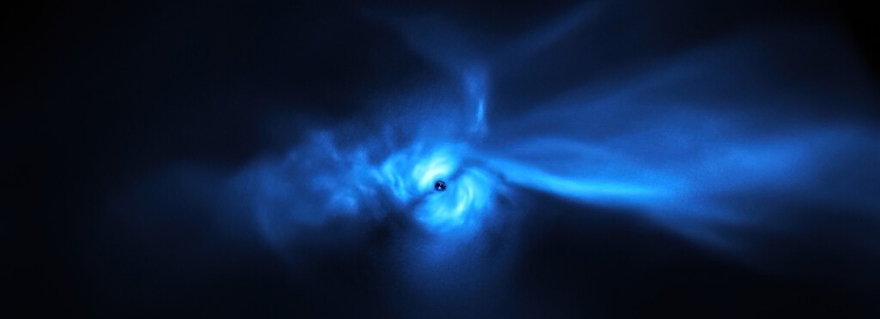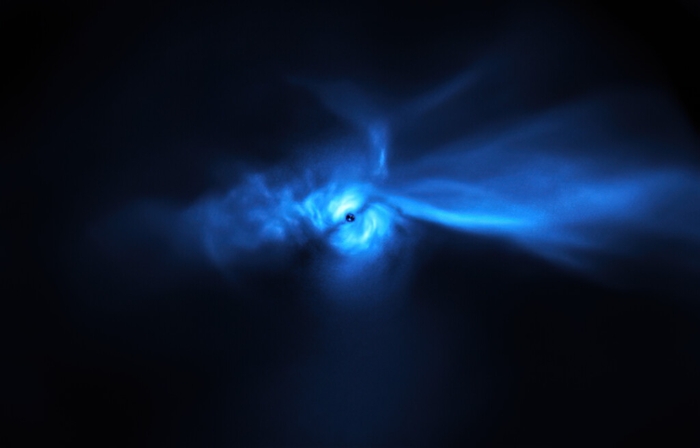
An international team of astronomers including Leiden scientists publishes the image of a young star with a surrounding dust disk that is still being fed from its surroundings. The phenomenon around the star SU Aur may explain why so many exoplanets are not neatly aligned with their star. The European Southern Observatory (ESO) has declared the image 'Photo of the Week'. The accompanying research appears in Astrophysical Journal Letters.
Heavy and invisible
SU Aur or in full SU Aurigae is a star much younger and heavier than our Sun. It is about 4 million years old and is located about 500 light-years from Earth in the constellation Voerman (Auriga). The star cannot be seen with the naked eye.
An international team of researchers mapped the star and its surroundings very precisely using the SPHERE instrument on the Very Large Telescope. They did so on the night of December 14, 2019 and managed to bring in 55 minutes of data. They then combined their data with previous observations from the Atacama Large Millimeter/ Submillimeter Array (ALMA) and the space telescope Hubble. This created a detailed picture that showed the so-called dust tails.
Exoplanets and dust disks
An exoplanet is a planet belonging to a star other than our sun. Since the discovery of the first exoplanet in the 1990s, over 4000 exoplanets have been found. Planets form in so-called protoplanetary disks, or dust disks, around young stars. First the dust clumps together into grains that gradually grow to the size of pebbles and eventually into boulders and planets. When they are large and heavy enough the planets can attract gas from the disk and in some cases grow into gas giants such as Jupiter and Saturn.
Dust tails
The dust tails in the new image come from the surrounding nebula that likely formed after the star collided with a huge cloud of gas and dust. By combining the different observations, the astronomers were able to deduce that material is still falling from the nebula and the tails into the dust disk. The researchers also saw that the star and the dust disk in which planets might form are not neatly aligned. They suspect that the material influx is causing this misalignment.

Misaligned
Lead researcher Christian Ginski (University of Amsterdam) explains: 'Many mature combinations of stars and exoplanets are already known not to be neatly aligned, but until now it was unknown how this came about. Our new observation shows that the misalignment can already occur in the dust disk where exoplanets are growing.'
The researchers will be looking extra closely at SU Aur in the near future to discover if any young exoplanets are orbiting in the dust disk. In addition, the astronomers are focusing their telescopes on 84 more young stars with dust disks. Among other things, they want to find out if there are more cases in which new material from the surroundings is falling onto the dust disk. If so, that could be the main cause of the many exoplanets that are not neatly aligned.
Scientific publication
This press release previously appeared on astronomie.nl






